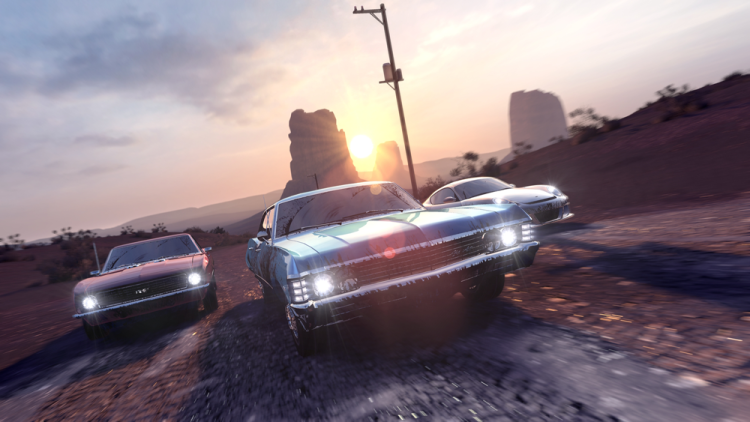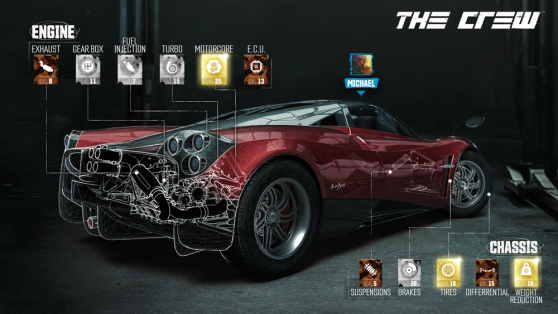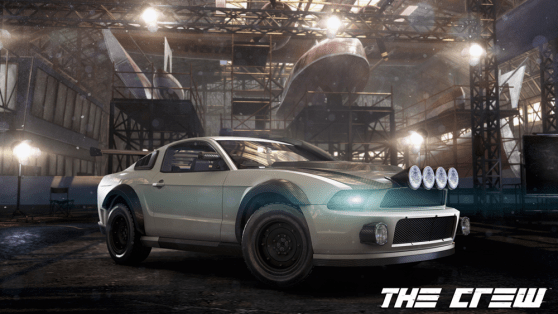While making the walk from the subway station to the Ubisoft office in downtown San Francisco, I was mentally preparing myself for a play session with new massively multiplayer online role-playing game. There would be the obligatory genre tropes to consider, such as character classes, item upgrades, side quests, and perks. I’d also likely have to join a party and take on a role of some kind.
Making a hard turn, cutting through a group of hi-tech worker drones on their way to lunch, I ducked down an alleyway toward a back entrance of the Ubisoft offices. A group of Ivory Tower developers dragging on their cancer sticks flanked the double doors leading to the play test. Bellowing behind those doors, I heard the familiar roar of the mythical beasts that would be a central character in this RPG. The sound, however, wasn’t the guttural echo that comes from straining vocal chords in a cavernous throat but the inorganic growl of a mechanical beast sucking in oxygen and gasoline while farting black clouds of carbon dioxide into the atmosphere as if global warming wasn’t going out of style.
The RPG I’m there to see is called The Crew (coming to PlayStation 4, Xbox One, PC, Android, and iOS later this year). It doesn’t take place in a mythical land of old or a futuristic fantasy landscape in outer space but on the pavement of the United States’ highways and byways.
‘Roll’-playing game
The Crew’s developers from Ivory Tower and Ubisoft Reflections seem eager to push a concept that is heavy on RPG elements. Although this is definitely not the first car-centric title to adopt the systems typically reserved for role-playing design, The Crew is a bit more transparent about its approach. Automobiles are the playable character’s race, with certain cars being unable to be assigned certain classes. The Crew has five classes, all containing their own tech tree of parts: Street, Dirt, Raid, Performance, and Circuit. It’s like choosing to be a Human Cleric or a Dwarf Warrior, but in this case, it’s a Street 1969 Dodge Charger or a Dirt Nissan Skyline GTR. What upgrades you can install on the car is determined by what class tech tree you’re concentrating on and what classes the car you’ve chosen can handle.
Upgrades in the individual tuning classes are like armor and weapon items as well, in that parts have an experience-level prerequisite, with the higher level parts automatically translating to a better performing vehicle. This “higher is better” approach to choosing parts to customize your vehicles is straightforward and uncomplicated. The Crew’s upgrade system is not nuanced, like other RPG-inspired driving games, where the best performing vehicle does not necessarily have every high-end part installed. In this game, just put on the highest-rated parts and jump back out onto the street.
You also get a third slot to all of this customization and upgrading, which lies in your gang of car thieves, mechanics, and drivers that appear in the main narrative. Each new member that joins the group brings a set of perks that can affect the overall performance of every car in your garage. Some characters enable players to upgrade physical attributes, such as the grip of the tires or the amount of nitrous that they may spray at once. Others may unlock perks related to driving abilities, such as improving the overall handling of every car.
All of this upgrading is tied to two things, leveling up and in-game currency called “Crew cash.” You earn both from completing tasks on the street, but an interesting feature caught my eye during this play session: the inclusion of an option to purchase Crew cash with real money. When asked about this, a representative explained that it was a monetization option. Players would be able to purchase Crew cash as a shortcut to the upgrading process. I found it interesting that a free-to-play mechanism would appear in a retail title. For example, World of Tanks’ entire economy seems to work under a similar system being proposed here. We’ll have to wait for the retail version to drop to see what this option is really all about.
But we’re toying around with parts, upgrades, classes, and perks for a reason: to drive. Once the vehicle is figured out, the game plops the car down into an open-world environment at the starting point of the main mission: Detroit. Now players can choose to go solo, hook up with friends to form a co-op group, or challenge each other as rivals. This concept of merging single-player into a progressive and always active multiplayer world isn’t new, but the size of the playable area, which spans the United States and seems to contain most major cities, makes the scope of The Crew ambitious.
The big thing, however, that could make The Crew interesting is the progressive open-world design working with the RPG class elements. Imagine a scenario where you have three other friends helping you clear a challenge. What if, just like in traditional MMORPGs, the challenge requires different classes working together? So maybe the group will need a street racer to handle the busy surface streets, an off-road driver to deal with cutting through the unpaved terrain, and a raid driver to handle smashing into another car. Although I could not get clear confirmation on whether multiplayer co-op challenges will work this way, it could be a possibility considering the game’s emphasis on classes.
Breaking from the pack
I’ll admit to being a tad jaded. In 2014, if your nonsimulator driving game isn’t blurring the single- and multiplayer modes together in an always connected and updated open world, you’re behind the times. On that front, I can’t twist my words around hard enough to make The Crew sound like a revolutionary concept. It’s the heavily pushed RPG elements, in combination with that mode structure, that is intriguing the hell out of me. Its aesthetics and language want me to see homage to multiplayer dungeon-crawler design, but the content is straight car porn.
VentureBeat's mission is to be a digital town square for technical decision-makers to gain knowledge about transformative enterprise technology and transact. Learn More












